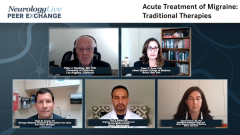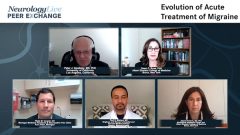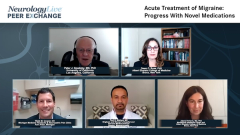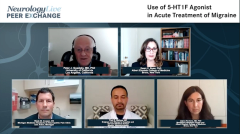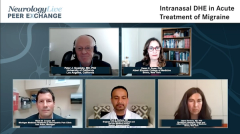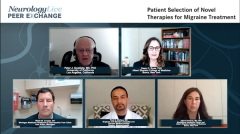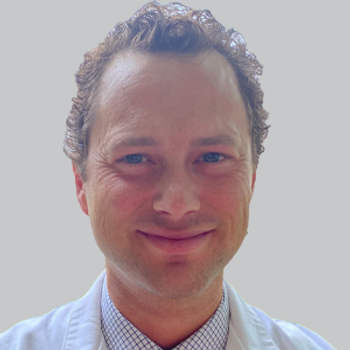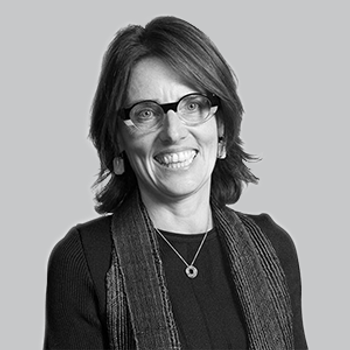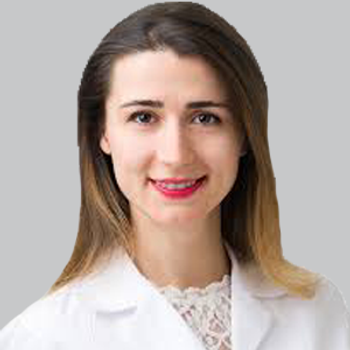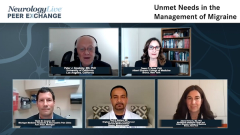
Patient Selection for Neuromodulation Devices
Episodes in this series

Factors considered for patient selection of neuromodulation devices for acute treatment of migraine, including access and cost.
Peter J. Goadsby, MD, PhD: Wade, how would you place these options when you talk to patients?
Wade M. Cooper, DO: The discussion about these devices is very stimulating, pun intended. But the thing about this is that when you stop and think about how these operate and what they do, it sounds too good to be true. My experience so far with using all 3 of these devices is very hit-or-miss. Unfortunately, the peripheral TENS [transcutaneous electrical nerve stimulation] device that we were talking about for the supraorbital nerves is something that a lot of my patients have purchased. A lot of them don’t continue to use it, for whatever reason. It may be lack of efficacy, feeling that it’s cumbersome, or whatnot.
I don’t end up recommending that a lot. I know that’s somewhat blasphemous for an almost adverse-effect-free treatment option, but that’s been my experience. The vagus nerve stimulator has been really hard for me to get my hands on and hard for my patients to get access to. The few who have used it have seemed to like it, which is a good sign, but I don’t have a many people in my practice using that.
The remote electrical neuromodulation, the device you wear on your arm, essentially tricks your nervous system into feeling a pain signal enough to send an antipain signal from the rest of your brain to the rest of your body. That is quite appealing. I’ve just started using that, and it’s been somewhat hit-or-miss with this also. There is a lot of appeal in the concept behind that treatment, but I don’t know if it’s going to be able to deliver what it’s reporting.
Their studies were done with low-impact migraine patients, and they did only a short-term study with it. I’m more eager to see what the outcomes are going to show with that approach.
Paul G. Mathew, MD: The biggest issue with these treatments is access. The 1 stimulation device that wasn’t mentioned is the transcranial magnetic stimulation [TMS] device, which is a device that you hold to the back of your head and it emits a magnetic pulse. This device came out before any of these newer treatments came out, and it had a golden opportunity to put a foothold in migraine therapy. The problem was that it was a rental device that costed—correct me if I’m wrong—$300 to $500 a month to rent.
It was completely inaccessible to patients. Even though I saw some value in it, I never prescribed it because of cost. The same thing is true with the other 3 stimulators that were mentioned. Although it’s not prohibitively expensive, I can speak to the simulator on the arm. That’s approximately $100 for 10 treatments. The way I pitch it is just like any other abortive treatment. It’s like playing golf. Depending on which hole you’re on, you’ll select the right club.
Having these stimulators as your first-line treatment may be prohibitively expensive, but it is worthwhile to keep 1 or several of these options at bay. If your traditional abortive treatments are ineffective, or if you can sense a bad migraine coming on, you can use a stimulator treatment in conjunction with the pharmacological treatment.
There is some value there when you’re not bankrupting the patient with these stimulators. But by the same token, it is a viable option to use in conjunction with their routine medications.
Peter J. Goadsby, MD, PhD: Speaking of bankruptcy, the reason we haven’t talked so far about the single-pulse transcranial magnetic stimulator is that the company went into bankruptcy and it now can’t be found. I don’t want anyone listening to this to be frustrated and sending their patients to find something while no one is answering the telephone at the moment.
Paul G. Mathew, MD: I guess they wouldn’t spring into action.
Peter J. Goadsby, MD, PhD: They would not spring into action. Very good.
Paul G. Mathew, MD: It’s the [eNeura, Inc] Spring TMS, that’s why.
Peter J. Goadsby, MD, PhD: Very good. I found it to be the most useful of these approaches for migraine. I have always found it most useful in prevention. Neuromodulation does a lot of what it says on the jar. If you want to modulate the nervous system, that’s a time-dependent phenomenon. Most of these studies were done in acute migraine because it’s relatively easy to do with an acute study end point.
The logistics and the business model are straightforward. Doing preventive studies is time consuming. It involves blinding and a lot of complexities. I was disappointed when that company went upright because it was using a modality that’s clearly safe in pregnancy. That is the 0.9 T energy that you get at the back of the head. The discussion that we’ve had is important.
Newsletter
Keep your finger on the pulse of neurology—subscribe to NeurologyLive for expert interviews, new data, and breakthrough treatment updates.

